An Illustrated Introduction to Some of our Region’s Turtles
Turtles are rock stars in the animal world, noteworthy not because they’re pretty, but because they’re weird looking. Rather than appealing to our fondness for beauty or grace, they speak to something older and more primal. To watch a snapping turtle lumber along the edge of a swamp is to look to the earth’s ancient past and a time when reptiles ruled the world. With its mossy carapace and wartlike tubercles, a snapper is the closest thing we’ll ever see to an ankylosarus.
There’s also something attractive about a turtle’s even disposition and deliberate nature. These qualities make them seem timeless; more than one poet has suggested that we might glimpse eternity in their wildly colorful eyes. This sentiment transcends western culture, as exhibited by the Native American belief that the earth was created on the shell of a giant turtle.
Artist Lauren diBiccari’s illustrations that follow, and the accompanying observations, speak to our human passion for these animals, a passion we know to be a double-edged sword. While most states in the Northeast have made notable strides in the past two decades to protect turtles from commercial exploitation, a quick Internet search will show you how established the pet market is. A major turtle poaching ring, which was selling endangered wild turtles to the pet market and snapping turtles to the meat market, was busted in New York in 2009. Last fall, turtle poaching again made national news when a man tried to cross the U.S. border into Canada with 51 live turtles stuffed down his pants.
Seven of the nine turtle species profiled here are listed as either threatened, endangered, or a species of special concern in at least one state in the Northeast. (The two not listed are snapping turtles and painted turtles.) So if you come across a rare turtle this summer, let someone know. The non-game biologists in any state Fish and Wildlife Department would be interested in a rare turtle sighting, and most states also have amphibian and reptile atlas projects where you can add to our understanding of turtle distribution. At the very least, if the thousands of people reading this story each stop and help a turtle across a road when they see one, we’ll have collectively accomplished some small bit of good.
-The Editors
Painted Turtle (image featured above)
Chrysemys picta picta
“One of the rewards of enduring a long, snowy winter is a long, leisurely bake in the warm summer sun. Warm-blooded or cold, hibernators or not, creatures of all shapes and sizes who remain in New England year-round observe this ritual. In all likelihood the painted turtle, also known as the sun turtle, devotes more time to this endeavor than any other animal, including human beings.”
-Mary Holland, from Naturally Curious
Common Snapping Turtle
Chelydra serpentine
“The likable thing about snapping turtles is that they are, in a word, trouble. But they are interesting trouble — tough, reclusive, and fiercely independent, unhuggable in a culture determined to make all animals cute, paragons of the ‘Don’t tread on me’ spirit in a society that thinks nature ought to be approachable. Snapping turtles are throwbacks not merely to the dinosaurian epoch during which they evolved, but also to our own past as a nation. They are hardheaded American originals.”
- Richard Conniff, from Swimming with Piranhas at Feeding Time
Blanding's Turtle
Emydoidea blandingii
“Blanding’s turtles approach the size and shape of a football, but their allure comes not from their physical appearance, a black shell with yellow markings and a bright yellow chin and throat, but their personality...Big brown and yellow eyes look right at you, unafraid yet nonthreatening. Looking into the eyes of a Blanding’s turtle makes you wonder if it feels it has chanced upon a recent evolutionary visitor to the world but does not want to be rude or judgmental about your presence.”
-Whit Gibbons, Professor Emeritus of Ecology, University of Georgia
Wood Turtle
Clemmys insculpta
“The wood turtle is one of a few reptiles that is not noted for its appearance, but rather, its intelligence. Among turtles, they show an environmental awareness that is well beyond most other species. Tinklepaugh (1932) reported that wood turtles tested in a maze exhibited the learning ability of a rat. Wood turtles in captivity will also learn pertinent parts of the human daily routine; a wood turtle held in captive by one researcher learned its way around the house and associated the kitchen with food and the bathroom with swimming.”
-Malcom L. Hunter et al., from Maine Amphibians and Reptiles
Northern Map Turtle
Graptemys geographica
…you think
of her patience, her fortitude
her determination to complete
what she was born to do
and then you realize a greater thing
she doesn’t consider
what she was born to do.
She’s only filled
with an old blind wish.
It isn’t even hers but came to her
in the rain or the soft wind
which is a gate through which her life keeps
walking.
She can’t see
herself apart from the rest of the world…
Mary Oliver, from “The Turtle”
Common Musk Turtle
Sternotherus odoratus
“The turtle I pluck from his solarium at once lives up to his common and Latin names – musk turtle, stinkpot, Sternotherus odoratus – projecting a noxious smell from glands under the border of his carapace. Though not as proficient and powerful a self-defender as the snapping turtle, these small turtles can inflict a determined and painful bite on the unwary captor. As with snapping turtles, I have never met a musk turtle who did not appear heavily overfed. Her glossy flesh bulges roundly from beneath her carapace as she tries to pull her head and limbs into her shell.”
-David M. Carroll, from Swampwalker’s Journal
Spiny Softshell Turtle
Apalone spinifera
“In the fall, these turtles burrow under the lake bottom to hibernate. Using transmitters, each turtle’s location is determined within a few feet. A diver then descends to the quiet and featureless lake bottom to search for the turtle’s hiding place. When the diver finds a likely lump, he carefully digs up the large, often unhappily thrashing turtle. In an instant the peaceful dive becomes a heart pounding wildlife wrestling match. Fortunately, the turtle’s disturbance is swift; a few measurements and a fresh transmitter, and it gets released back into the lake for its winter sleep.”
-Adam Kane, former co-executive director Lake Champlain Maritime Museum, from Vermont Public Radio interview
Spotted Turtle
Clemmys guttata
“There were spotted turtles, too. Smaller than painted turtles, jet black and peppered with bright yellow spots, they spend most of their time hidden among the grass humps and sloughs of marshes. But in spring they come out of hibernation and make for vernal pools to recharge their batteries with wood frog and salamander eggs. Unlike other turtles, they seem to realize the perils of asphalt and move quickly. I learned to recognize their sprints....”
-Greg Lowell, from the back page of this very magazine (Northern Woodlands Summer 2015 edition)
Eastern Box Turtle
Terrapene carolina Carolina
“A fortunate Eastern box turtle can lead a very long life, very slowly. Records of individual turtles living well past 100 are not uncommon. One such creature was caught and marked on Martha’s Vineyard in 1861, and recaptured several times through 2006. It was a hatchling before the Civil War.”
-Dave Taft, from The New York Times
Best Turtle Management Practices
Each state in the Northeast is home to at least one threatened or endangered turtle species, and wetlands are among the more threatened ecosystems nationwide. As such, it behooves all of us to pay special attention to turtles in our land management endeavors.
The first step to good turtle management involves learning the habitat preference of various turtles. As a general rule, snapping, painted, musk, and Blanding’s turtles like slow-moving or still water with soft bottoms and emergent vegetation (cattails, for instance). Wood turtles are primarily river turtles that prefer streams with moderate slopes and speeds; they feed in the upland and field sites adjacent to the stream systems and rely on the streams for refuge and wintering sites. Similarly, spotted turtles are both terrestrial and aquatic (though not to the same degree), traveling between uplands and wetlands. Map turtles are a lower river/lake species that eat mollusks. Spiny softshell turtles are entirely aquatic and found in larger lakes and rivers. Eastern box turtles are land turtles, and while they’ll bathe in puddles or small bodies of water, they prefer deciduous or mixed woods with a moist forest floor.
Most female turtles lay their eggs in May to early June and the young hatch in late summer or early fall. Because some hatchlings may overwinter in the nest, these sites must remain undisturbed all year. Turtle eggs are a popular food for raccoons, skunks, and opossums.
Landowners can provide nesting habitat by creating small sand or gravel piles in sunny places near ponds or lakeshores. A slightly elevated site will help prevent flooding of the nest. These piles need to be kept free of all tall vegetation. Turtle eggs can tolerate grass roots, but other roots will kill them. Because some aquatic turtles spend the winter on the bottoms of lakes and ponds, the sites must not freeze to the bottom in winter. Lakes and ponds with depths of five feet or more are proven wintering habitat for aquatic turtles. Eastern box turtles dig into the leaf litter and hibernate in forests.
Many species of turtles need to bask in order to raise their body temperatures. Leave downed trees along the edges of ponds, rivers, wetlands, and lakes to provide adequate basking locations. Vernal pools are important to many species of turtles, which use them as feeding areas in spring and summer. In areas where timber is to be harvested, a 100-foot buffer around a vernal pool is recommended to maintain shade. An additional limited buffer is recommended to 600 feet, in which timber is harvested carefully to minimize soil disturbance and at least 70 percent crown closure of the tree canopy is maintained.
Management information adapted from: A Landowner’s Guide – Wildlife Habitat Management for Lands in Vermont, by the Vermont Fish and Wildlife Department. Copies are available here.


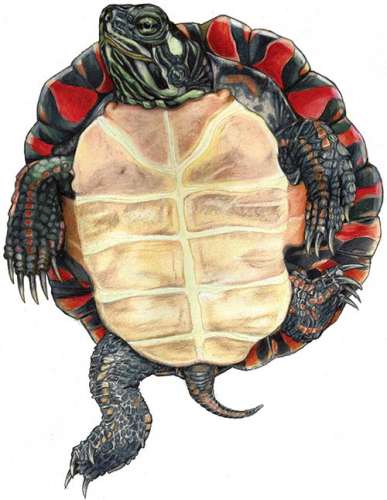
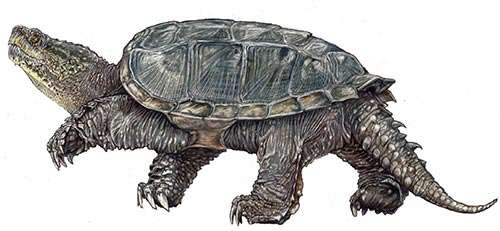
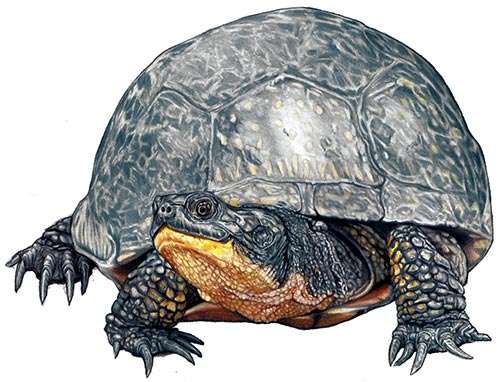
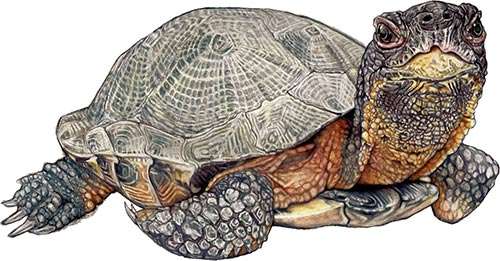
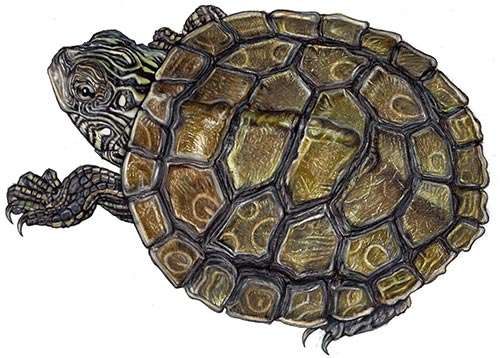
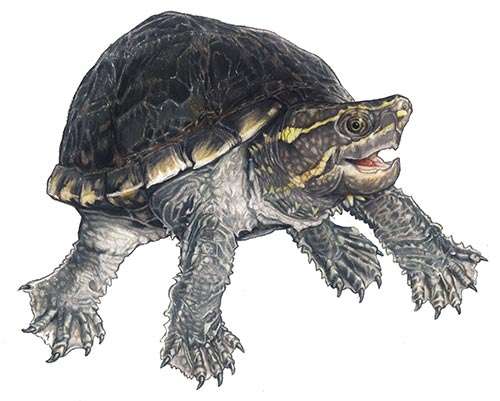
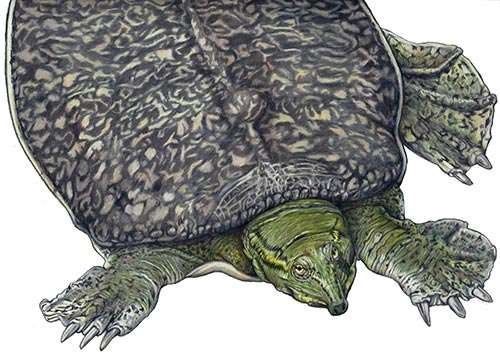
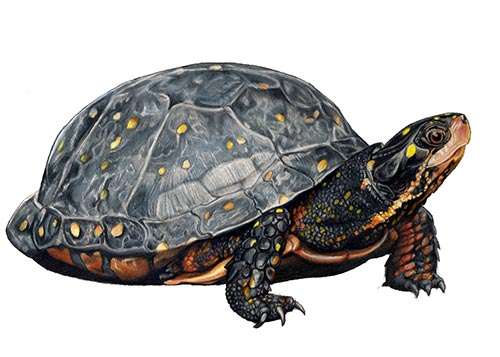
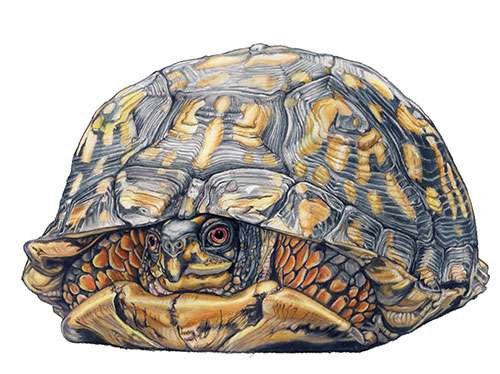
Discussion *